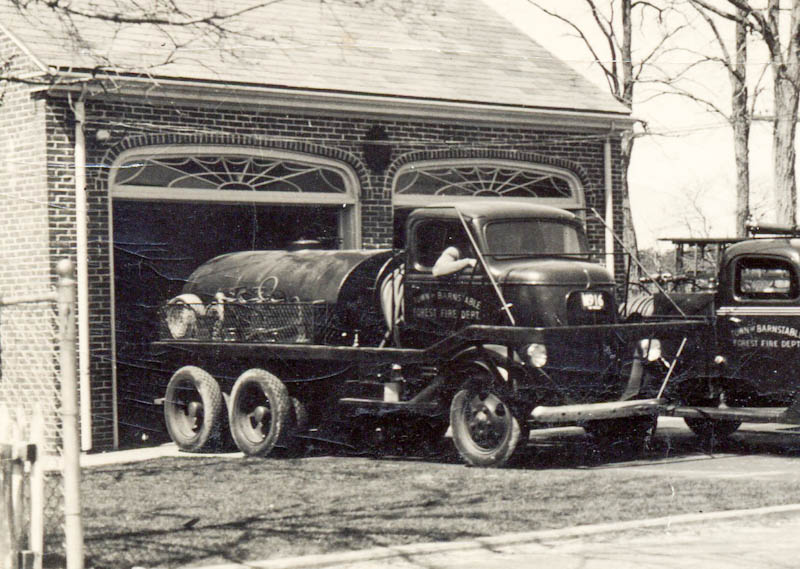| The story of how the Cape Cod brush
breakers came about starts with an understanding of what Cape Cod
was like in the "old days." This feature tries to document and
explain how the fire departments on Cape Cod and in southeastern
Massachusetts adapted vehicles to battle forest fires that burned
thousands of acres of woods each year. As
the story goes, prior to 1937 or so, grass, brush, and woods fires
were battled by hand, with hose lines that could reach a fire from a
road. The alternative was to use hand tools and pump cans, but this
was only good for smaller fires.
By 1937, vehicles had apparently become
large enough and powerful enough to be enhanced with steel bars,
sufficient size water tanks, and pumps to go off road and reach
fires deeper in the woods than previously possible. By accessing
fires quicker, while still small, they were able to reduce a great
deal of danger and damage.
The fire chief in Osterville, Bernard S.
Ames also served as the forest fire warden (common in those days).
He and some of the other men, including Carl Starck who owned the
local garage, and others no doubt, got together and turned a 1937
Ford COE (Cab Over Engine) chassis into a vehicle that came to be
known as a "Brush Breaker" by welding steel bars and chassis
protection to a truck with a large (believed to be about 800
gallons) tank and a pump.
The truck was not even finished
according to stories, when it responded to its first fire, a large
woods fire in Hyannis. The paint wasn't even dry, and surely no one
had any experience driving it. The truck got caught in the fire and
burned at the first fire it responded to. It was of course rebuilt
and became an example from which other departments designed and
built trucks for their own communities.
There continued to be many, many
wildland type fires over the years and a number of generations of
brush breakers have come and gone over the years. Each generation
brought new innovations and adapted to changing conditions. Teams of
brush breakers working together on Cape Cod established what became
a mutual aid system and helped reduce the damage done by large out
of control fires.
Brush breakers are designed to
literally go off road, push over trees as needed, to enter a forest
or wildland area to reach a fire and extinguish it while it is still
small enough to put out. The alternative is to allow the fire to
grow substantially larger as it burns and destroys until it
eventually reaches homes or other populated areas. The innovation of
this apparatus worked here on the Cape because of the terrain, type
of forestation, and other factors somewhat unique to the area.
Brush breakers are still in use
today and while the larger fires have been less often, the potential
for them continues to exist. New apparatus continues to be built in
anticipation of future fires. These pages show the development and
use of apparatus used in battling brush and forest fires around the
Cape.
|
![]() A Special Feature
A Special Feature ![]()
![]()








